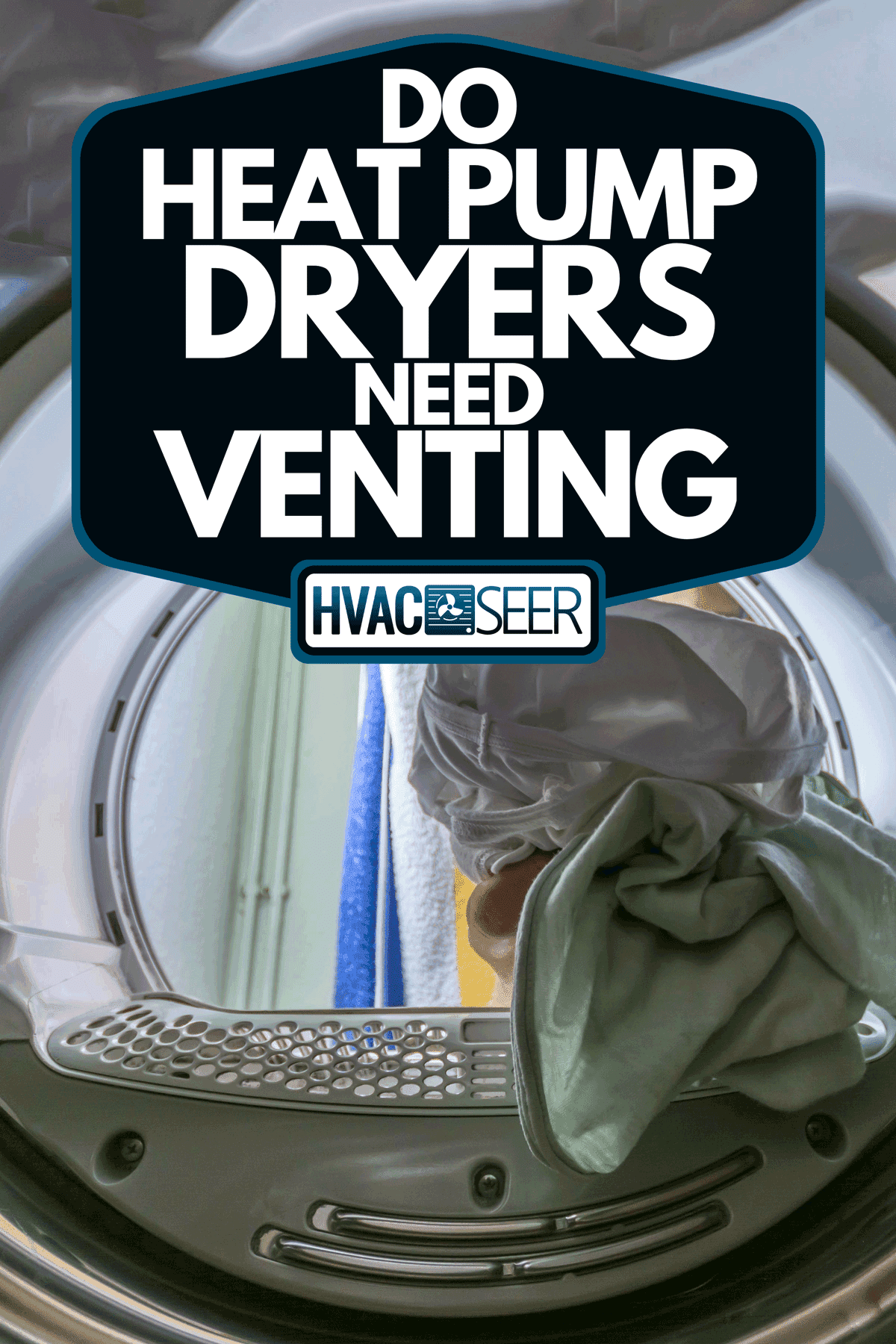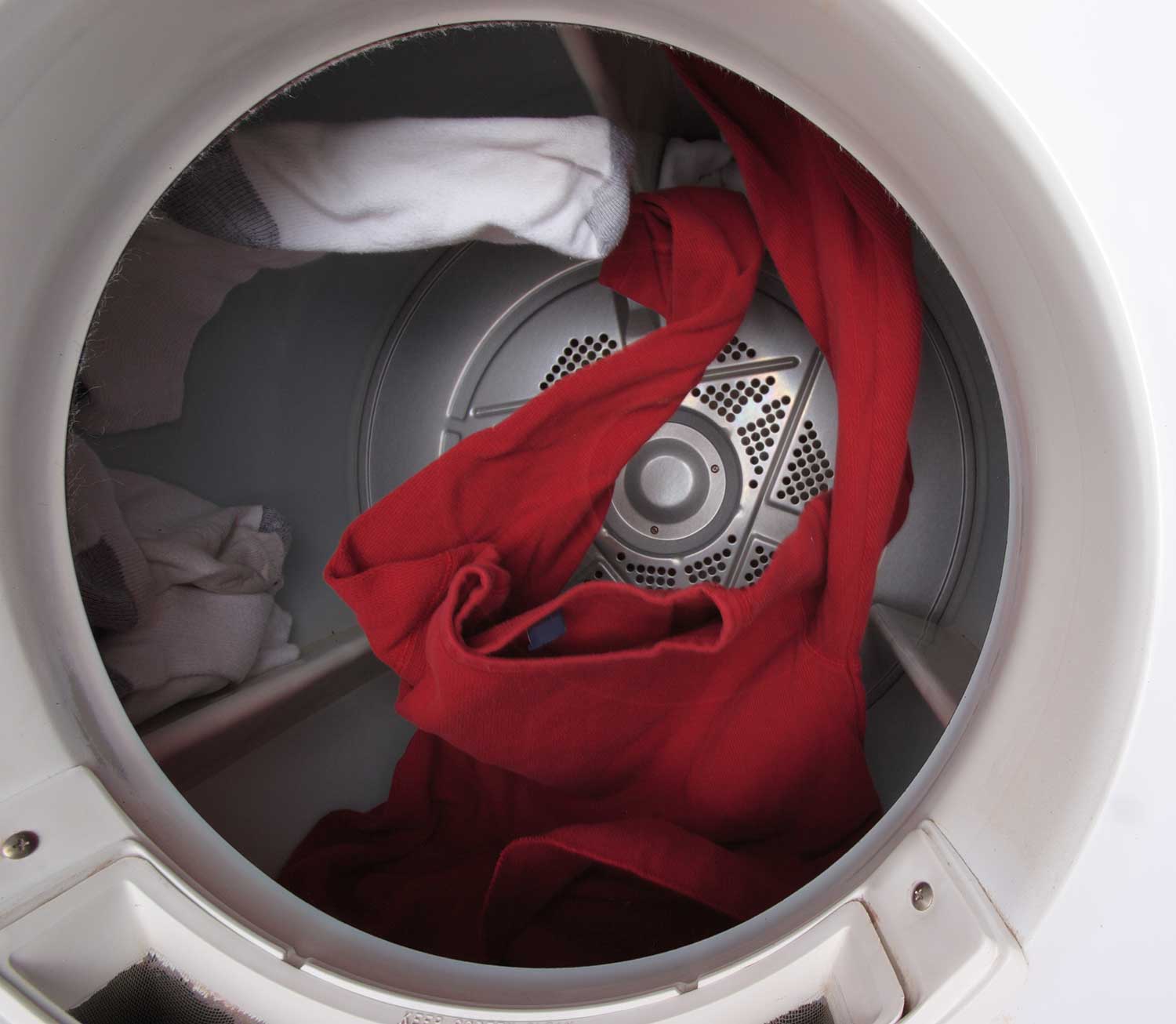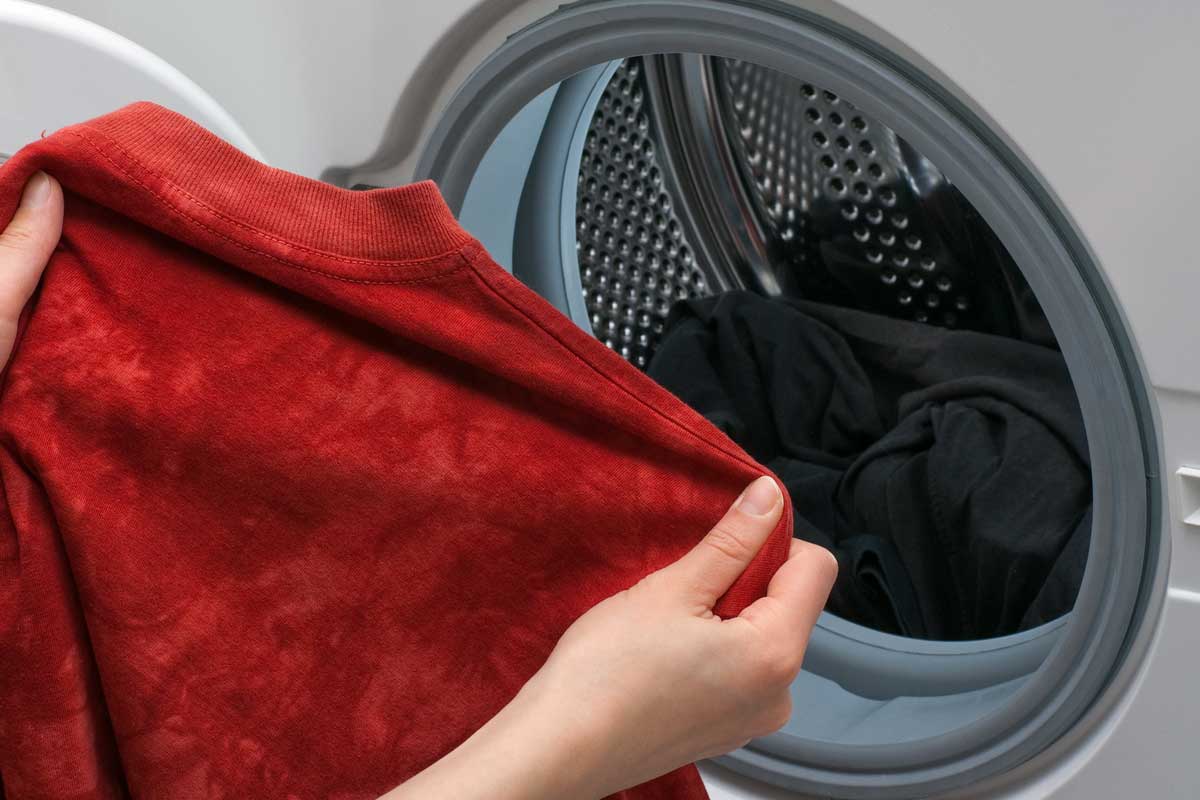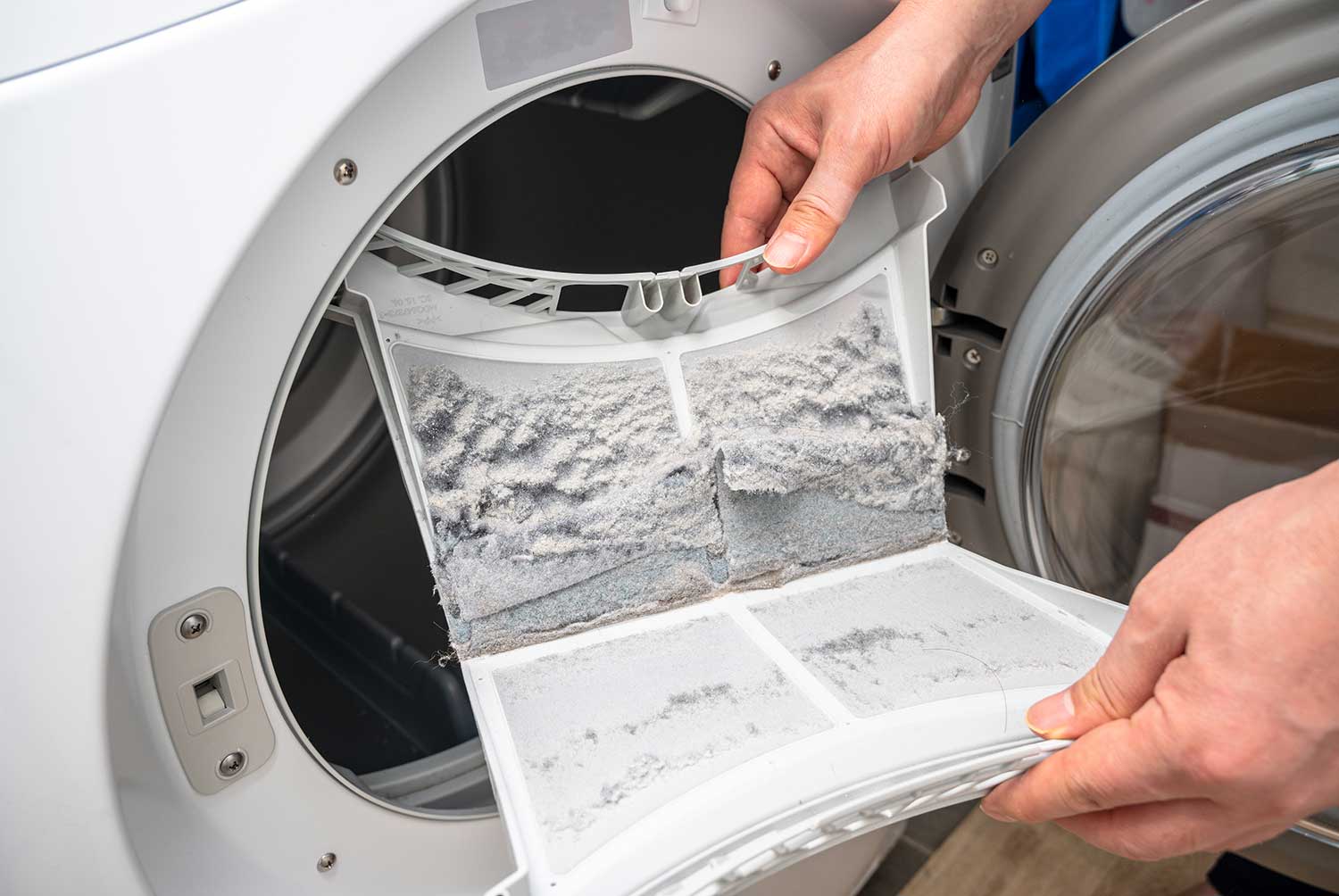A heat pump dryer is quite an energy-efficient appliance as it uses less energy to dry your clothes. But does it require venting? We consulted the professionals, and this is what we found out.
Dryer vents eliminate excess heat produced during the dryer cycle to avert fires. However, heat pump dryers do not need venting since their engineering recycles the heat.
With dryers being some of the most energy-consuming appliances at home, you may be interested in buying a dryer that still dries your clothes while saving energy. If you've come across heat pump dryers, what are some of their advantages and disadvantages? How can you determine the best dryer for your clothes? What maintenance do these dryers require? We discuss each of these issues in this article. Read on!

Pros and Cons of a Heat Pump Dryer
Heat pump dryers function without heating the clothes or venting warm, humid exhaust air to the outdoors. With increased energy costs, these dryers are becoming more popular. These are some of their advantages and disadvantages:
Pros
- They are easy to install since they don't require ventilation. Instead of releasing heated air outside, the air circulates in a closed loop through the drum.
- You can install these dryers in small spaces since they only require a drainpipe to remove the water extracted from clothes during drying. The drawn water can be plumbed to drain automatically into the same pipe where the washer drains.
- These dryers can cut back on energy use by at least 28% in comparison to standard dryers since they recycle air, heat it while still warm, and use it to dry your clothes.
- They are gentler on clothes since they dry the clothes at lower temperatures. Additionally, there are minimal chances of fabric shrinking.
- These dryers eliminate the possibility of mold build-up since they don't release moisture and humidity into the air.
- Most of these dryers have a moisture sensor that helps conserve energy and prevents over-drying.
- The dryer does not increase the work of an air conditioner since it doesn't alter the set room temperature by venting heat.
Cons
- The initial cost of purchasing a heat pump dryer is hefty. The advanced engineering used in these dryers increases the costs to the consumer. Furthermore, the dryer might not pay for itself in the long term for occasional users, considering the expected life span of about 5-10 years of the appliance.
- These dryers take longer to dry clothes since they use lower temperatures. Thus, they are not convenient if you routinely need your laundry urgently.
- The dryer requires the room temperature to be about 50°F for it to function efficiently. Therefore, it cannot be located in a garage where the temperatures are lower than required. Additionally, the dryer will be inefficient if it is too hot since it requires cool air for condensing.
- Most heat pump dryers have a considerably smaller capacity compared to standard dryers. Hence, they are not ideal for large families or if you need to dry several loads daily.
Guide to choosing the best dryer for your clothes

If you are shopping for a new dryer, consider these factors to choose a convenient appliance that sufficiently meets your needs.
- Consider the kind of items you will be drying. We'd recommend opting for a larger-than-average capacity dryer if you wash bulky items regularly.
- Assess your frequency of doing laundry. It is unnecessary to purchase a very expensive dryer if you do not do laundry regularly.
- Consider over the space available in your laundry room. If you have a small space, it is advisable to choose a stackable washer-dryer set.
- Determine whether ventilation is available. In the absence of ventilation, opt for an appliance that does not require ventilation.
- Consider the effects of running the dryer on your energy costs. It makes sense to opt for energy star certified dryers with lower running costs.
- Assess the quantity of laundry per load. It is recommended to purchase a dryer with larger drums for larger households as they offer greater capacity.
Maintenance of heat pump dryers

Routine maintenance of your heat pump dryer will improve efficiency and extend the lifespan since the appliance won't need to work more than required. Additionally, you will save on repair costs that you would incur if the appliance fails since you will catch little things that can significantly impact the appliance's efficiency.
Perform these tasks routinely to keep your dryer in perfect working condition:
Clean the lint screen
Ensure that you empty the lint screen after each load. If the screen is blocked with lint, the drying cycle may take longer, resulting in higher energy bills.
To clean the lint screen:
- Pull out the screen.
- Twirl your finger on the screen to remove the lint.
- Secure the screen back into place.
We'd recommend you avoid rinsing or washing the lint screen to get rid of lint since moist lint is hard to remove. Additionally, some heat pump dryers have two lint screens, requiring extra maintenance.
Laundry detergents and fabric conditioner residual may build up on the lint screen, thus increasing the time taken to dry your clothes or causing the dryer to stop before your load is completely dry. It is essential to clean the lint screen often to prevent residue build-up.
To wash the lint screen:
- Use a finger to roll off lint from the screen.
- Moisten both sides of the screen with hot water.
- Lather a nylon brush with liquid soap and hot water.
- Use the brush to scrub the screen to clear build-up.
- Thoroughly rinse the screen with hot water.
- Use a clean towel to dry the lint screen.
- Reinstall the screen to the dryer.
Inspect the lint screen for defects
Regularly inspect the lint screen to confirm that it is not damaged, blocked, or missing. Also, ensure that the screen is firmly held in place before drying your clothes. Running a dryer with a damaged or missing lint screen can cause overheating and damage to the dryer and the clothes.
Clean the condenser coils
Regularly clean the condenser coils for efficient operation. When these coils are dirty, moisture from the drying cycle won't condense as expected. Consequently, the air recycled will still contain high moisture content leading to higher energy bills.
Although some heat pump dryers have self-cleaning condensers, some models may need you to manually clean the condensers frequently, depending on the quantity of laundry you dry.
A heat pump dryer with condensers that require manual cleaning has a hatch on the front that opens to access the condenser coils. Clean the coils using the brush of your vacuum cleaner.
Clean the drum
Cleaning the drum ensures that the sensor in the drum adjusts to the quantity of laundry better. Consult the dryer's manual to determine where the sensor is located to enable you to clean it properly.
To clean the drum:
- Clean the drum using a mild detergent, warm water, and a piece of cloth.
- Rinse the drum with a wet towel or sponge.
- Tumble clean towels to dry the drum.
If the drum is stained:
- Apply a liquid non-flammable household cleaner to the stained area. You can also mix warm water and powder detergent, then apply the paste to a soft piece of cloth.
- Dab the drum with a soft piece of cloth until you remove the stains.
- Use a damp cloth to wipe the drum.
- Tumble clean clothes or towels to dry the drum.
Although stains from brightly colored cotton items or denim blue jeans may permanently stain the drum, these stains cannot transfer to future loads of clothing.
This multipurpose cleaning solution is ideal for removing stains. Check it out on Amazon.
Clean the bottom filter

The filter catches lint, fluff, and debris from laundry during the drying cycle, thus preventing the excess debris from being pulled through the airflow into the heating element. A dirty filter is ineffective and may cause your appliance to overwork while drying clothes or fail to dry the clothes properly.
Cleaning the filter keeps your dryer in proper working condition.
To do this:
- Locate the filter door on the bottom of the dryer and hold the handle firmly to pull out the filter. You can consult your manual to determine where the filter is in your specific model.
- Separate the foam from the bottom filter.
- Hand wash the filter foam and filter or rinse with water.
- Wring out the filter foam. It is not advisable to insert the foam into the filter if it is still soaked.
- Put back the filter foam in the filter.
- Replace the filter securely back to the filter chamber and close the door.
Replace the filter if worn or damaged. It is not advisable to run the dryer if the filter is damaged, loose, blocked, or missing, as this can cause overheating and damage the appliance and fabrics.
Final Thoughts
Heat pump dryers are becoming increasingly popular as more people embrace the need for energy efficiency. Not only are these appliances energy-efficient, but you can also use them in smaller spaces since they don't require ventilation.
Additionally, most models feature advanced technology such as moisture sensors to prevent over-drying, anti-wrinkle technology, and even smart settings. However, these additional settings increase the purchasing cost of the appliances.
For best drying, maintain your appliance routinely to extend its useful life and avoid hefty repair costs as you would catch defects in good time.
You may also be curious about these topics:

